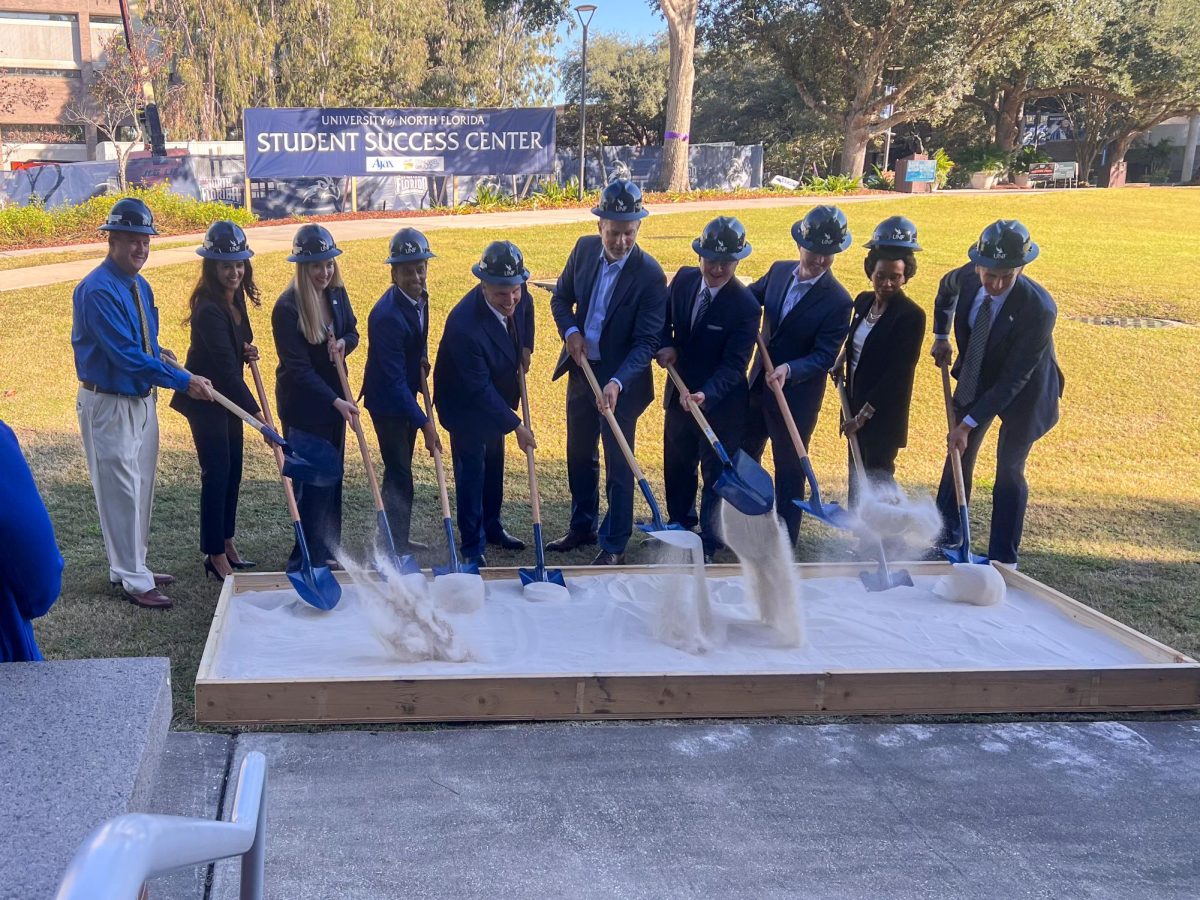Cross contamination is hindering efforts to improve recycling at UNF despite new trash cans, recycle bins and raised student awareness, said Jerry Garner, assistant superintendent of the UNF Recycling/Refuse Center.
Cross contamination occurs when trash is thrown in with recyclables and must be taken out by hand.
“Make a point to put the trash in the trash and the recycle in the recycle,” Garner said.
Approximately 150 brown bins for garbage and recycling are located around campus. Costing $825 a piece, the containers are made of recycled plastic and are expected to last longer than normal garbage cans, Garner said.
They were strategically placed based on information uncovered during “Garbage on the Green” in the Spring 2007 semester.
During this event, a body of volunteers – composed mainly of students – sorted through tons of garbage, Garner said.
The group finished with a blueprint of what garbage was coming from what areas of campus. These areas were then outfitted with bins to meet specific garbage and recycling needs, Garner said.
To help prevent cross contamination, bins with specific openings were chosen by Physical Facilities to be placed around UNF.
Trash containers have a rectangular opening while beverage recycle bins have circular openings with flexible plastic guards.
But no matter how ingeniously the bins are designed, they cannot prevent contamination by themselves, Garner said. Expanding students’ knowledge of what can and cannot be recycled is also necessary.
He said students could help by simply remembering plastics, papers, and other materials can be recycled.
“A lot of people don’t think that way,” Garner said. “Everything is garbage to them.”
Lucy Webb, a labor worker for the Recycling/Refuse Center, used to spend hours sifting through recycling and sorting trash placed incorrectly in the recycling bins.
Southland Waste officially took over the job from Webb Oct. 1.
The recycling bins are maintained by Recycle/Refuse Center workers and are typically emptied three times a week. Recyclables are transferred from their brown, rectangular homes to 6-cubic-foot, bright-blue bins.
The bins are then taken on a golf cart to a compactor – such as the one in lot 14 – where the recycling is compressed and left for Southland Waste to take and sort.
“I think that it just doesn’t really make sense not to recycle,” said Roarie Borg, a junior international studies major. “It’s one of the easiest steps people can take to reduce their impact on the environment.”
Borg is president and founding member of the UNF student-run organization Protecting Every Aspect Concerning the Environment (P.E.A.C.E.).
P.E.A.C.E’s goal is to have a lasting impact on campus, especially through raising student awareness, Borg said.
Beginning tentatively in mid-November, P.E.A.C.E. members want to give lectures to raise student awareness about what can and cannot be recycled.
In the past, UNF only received money for recycling cans. Now, the university will also be paid for plastics, papers and other recyclables.
Garner said he isn’t sure yet how much money UNF will receive for each batch of recyclables. But more recyclables will hopefully translate into less garbage, which will result in lower fees for dumping garbage in landfills, he said.
Recycling isn’t the only program being improved at UNF. New gray compacting trashcans are currently being placed around campus, Garner said.
There is already one in Buildings 51 and 53. These cans flatten the trash into dense rectangles, which reduces how often they need to be emptied.
E-mail Beth Coulter at news@unfspinnaker.com.











